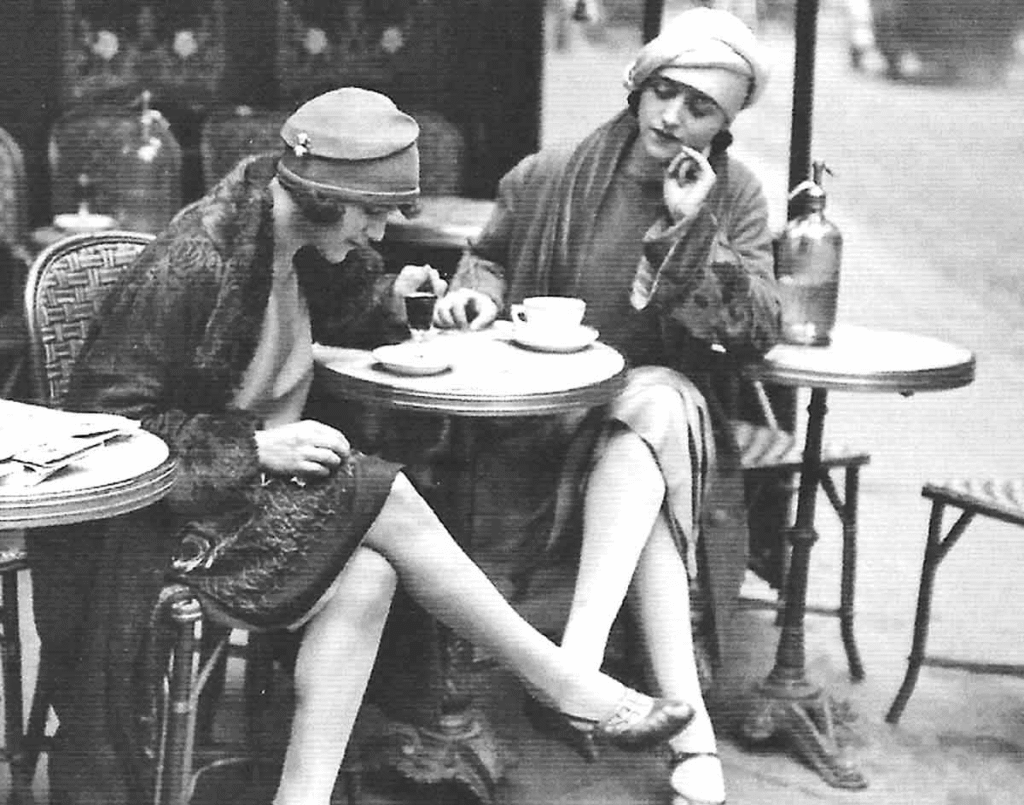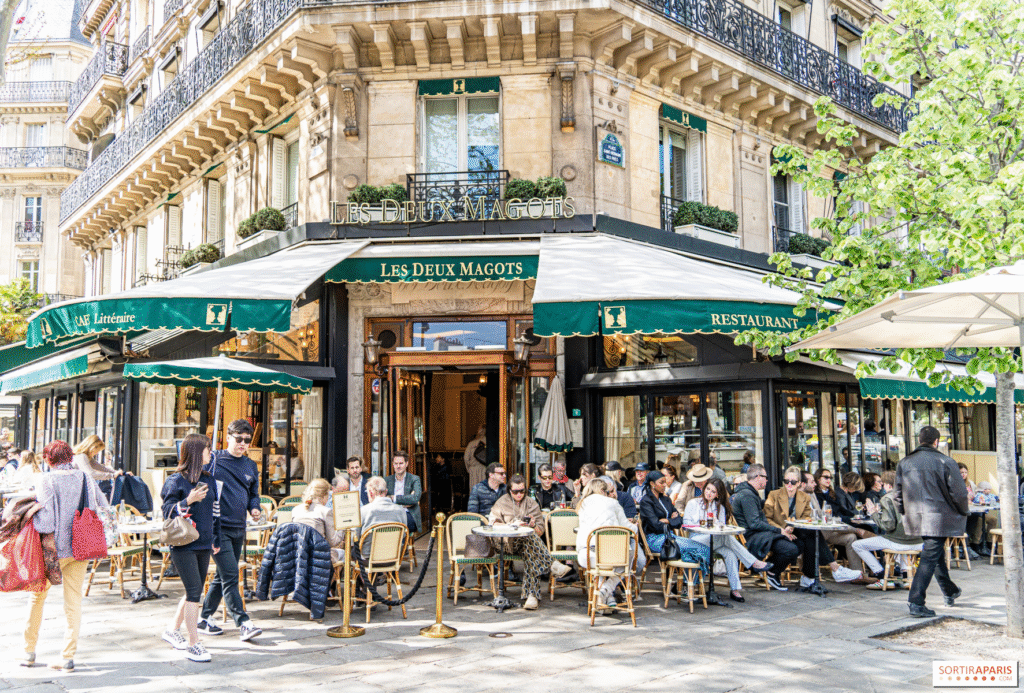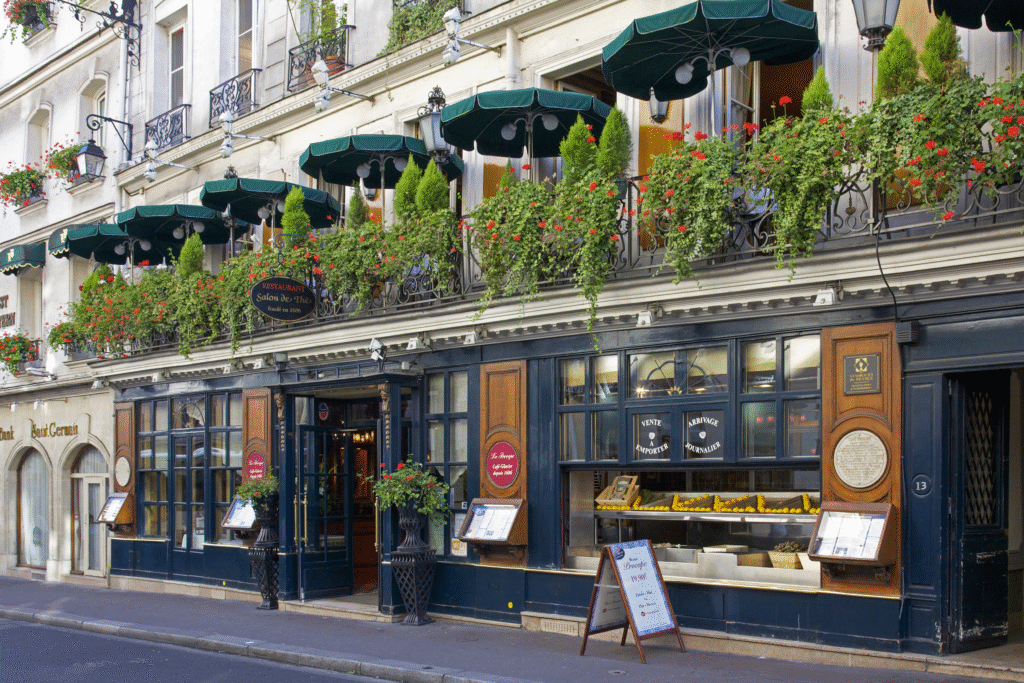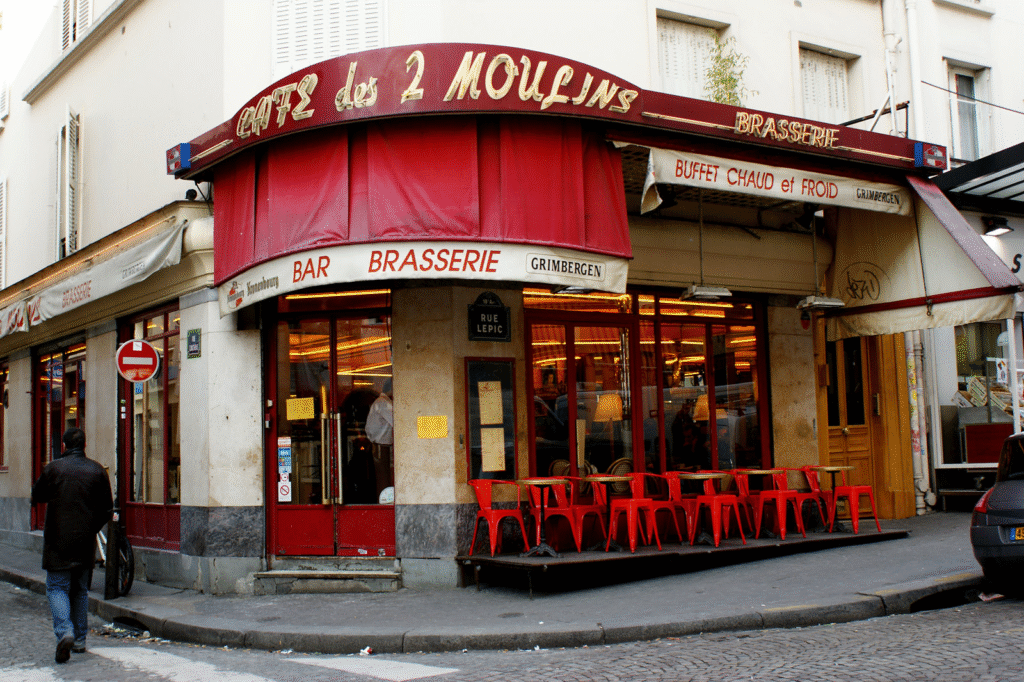Paris is a city that knows how to romanticise the everyday—morning strolls along the Seine, handwritten notes tucked inside vintage books, and yes, the timeless ritual of drinking coffee in a café. Long before specialty coffee bars and minimalist espresso counters became global sensations, Parisian cafés shaped how the world thinks about coffee culture. They weren’t just places to sip a drink; they were intellectual hubs, artistic incubators, political arenas, and stages where entire cultural movements unfolded.
Today, many of the world’s most celebrated coffee scenes—from Melbourne to Seoul to New York—owe a quiet debt to the Parisian café tradition. In this deep dive, we revisit the Parisian cafés that not only influenced global coffee culture but continue to set the tone for how we experience café life today.
- The Birth of Café Culture in Paris
- Café de Flore: The Blueprint of Intellectual Coffee Culture
- Les Deux Magots: Where Literary Legends Found Their Voice
- Café Procope: The Oldest Café in Paris and a Political Powerhouse
- Café des Deux Moulins: Pop Culture Meets Café Charm
- Café de la Paix: The Icon of Parisian Elegance
- How Parisian Cafés Influenced Modern Coffee Movements
- How These Cafés Continue to Influence the Global Coffee Scene
- Paris Today: A Blend of Tradition and Modern Coffee Innovation
- Why Parisian Cafés Still Matter
- Final Thoughts
The Birth of Café Culture in Paris

Paris’s café history began in the late 1600s, when coffee first made its way into France through merchants and diplomats. Quickly embraced by intellectuals, nobles, artists, and revolutionaries, cafés became social and cultural institutions where ideas circulated as freely as caffeine.
By the 19th century, cafés had become the heartbeat of Parisian life. Writers drafted novels at small tables, painters sketched napkin-bound masterpieces, and philosophers debated everything from politics to poetry. The café was no longer just a beverage stop—it was a lifestyle.
This early foundation is what inspired countless global café concepts centuries later. The idea of a public gathering space, open to everyone regardless of social class, shaped how modern-day coffee shops position themselves: welcoming, social, creative, and intellectually stimulating.
Café de Flore: The Blueprint of Intellectual Coffee Culture

Few cafés in the world are as iconic as Café de Flore, located in the stylish Saint-Germain-des-Prés neighbourhood. Since opening in the 1880s, it has served as a meeting point for the greatest minds of the 20th century: Simone de Beauvoir, Albert Camus, Pablo Picasso, and of course, Jean-Paul Sartre. Sartre famously wrote that he spent entire days at Café de Flore—from morning coffee to evening drinks—observing human behavior and scribbling ideas for existentialist philosophy.
This intellectual energy inspired coffee shops worldwide to become more than F&B spaces. Many modern cafés intentionally design their interiors—wooden tabletops, warm lighting, accessible seating—to encourage long stays, deep conversations, and creative work. The “coffeehouse as a third place,” a concept popularized in the U.S., borrows heavily from the café culture embodied by Café de Flore.
Les Deux Magots: Where Literary Legends Found Their Voice

Just steps away from Café de Flore is Les Deux Magots, another legendary Parisian institution. Its history mirrors the rise of café intellectualism in Paris, hosting writers and artists from Hemingway to James Joyce to Julia Child.
What made Les Deux Magots influential wasn’t just its clientele—it was the unspoken code of café life:
You could sit for hours with a single drink, lost in thought or buried in a manuscript. No one would rush you. No one would interrupt.
This spirit shaped global café etiquette. Today, remote workers tapping away on laptops at cafés in Brooklyn, Tokyo, or London are part of a cultural legacy that began at Les Deux Magots. The idea that cafés can be sanctuaries for productivity and creativity is deeply Parisian in origin.
Café Procope: The Oldest Café in Paris and a Political Powerhouse

Founded in 1686, Café Procope is widely recognized as the oldest café in Paris—and arguably the birthplace of café culture as we know it. Voltaire reportedly drank up to 40 cups of coffee a day here (albeit mixed with chocolate), while thinkers like Rousseau and Diderot used the space as a hub for Enlightenment ideas.
Later, the café became a gathering point for revolutionaries such as Robespierre and Marat. The French Revolution was not sparked inside Café Procope, but its discussions were fueled by the caffeine consumed within its walls.
Modern cafés that brand themselves as “community spaces” or “creative hubs” owe much to Café Procope’s legacy of intellectual and political debate. The notion that ideas can flourish in a café setting—and even shape society—has influenced today’s co-working cafés, discussion-based meetups, and creative communities built around coffee shops.
Café des Deux Moulins: Pop Culture Meets Café Charm

Fast forward to the 21st century, and you’ll find Café des Deux Moulins, the Montmartre café made famous by the film Amélie. After the movie’s release, the café became a global pop-culture landmark, proving that Parisian café culture extends far beyond intellectual history—it is also woven into cinematic and artistic storytelling.
The café’s rise to global fame inspired a new generation of cafés around the world to lean into aesthetics, storytelling, and atmosphere. Instagrammable corners, signature colours, and thematic interiors—now staples in modern café design—can trace some influence to cafés like Deux Moulins, where ambience is as essential as the coffee itself.
Café de la Paix: The Icon of Parisian Elegance

While some Parisian cafés are known for their intellectual roots, Café de la Paix is celebrated for its elegance. Dating back to 1862, it exudes luxury—high ceilings, marble finishes, and gilded décor. Writers like Oscar Wilde and historic figures like Emile Zola once dined here, drawn not only to the coffee but to the grandeur of the space.
Café de la Paix influenced the rise of sophisticated, design-forward cafés around the world. Many high-end coffee shops today mimic this blend of luxury and comfort, elevating coffee drinking into a refined experience. The idea that a café can be both beautiful and culturally significant is a Parisian gift to global coffee culture.
How Parisian Cafés Influenced Modern Coffee Movements
1. The “Third Place” Concept
Sociologist Ray Oldenburg popularised the term “third place,” describing spaces that are neither home nor work but essential for community building.
Parisian cafés were the original third places, long before the term existed.
Today:
- Co-working cafés
- University café lounges
- Artsy neighbourhood coffee shops
all emulate the Parisian model: a place where ideas flow freely, and people gather not only for beverages but for connection.
2. Slow Coffee and the Art of Staying
In many cities, coffee is still seen as fuel—something quick to grab on the go. But Paris champions the art of lingering. The simple act of sitting for hours with a book or a notebook, watching passersby, shaped the modern “slow coffee” movement.
This is why many cafés worldwide now:
- Provide comfortable seating
- Serve table-side espresso drinks
- Encourage staying instead of rushing
It’s a Parisian tradition exported across continents.
3. Café Aesthetics and Identity
Parisian cafés are defined by their distinct look:
- Round marble tables
- Rattan chairs Sidewalk terraces
- Red or green awnings Brass accents
- Classic bistro lamps
This aesthetic inspired thousands of cafés globally, from Taiwan’s boutique coffee houses to New York’s French-inspired brasseries. Even “Pinterest-style” cafés borrow heavily from Parisian design DNA.
How These Cafés Continue to Influence the Global Coffee Scene
Paris is not typically the first city that comes to mind when you think of specialty coffee—that crown often goes to Melbourne, Tokyo, or Seattle. But Paris laid the cultural groundwork for café life long before specialty coffee existed.
Global café values rooted in Paris include:
- Cafés as creative spaces (from writers to digital nomads)
- Cafés as social hubs (community-building spaces)
- Cafés as aesthetic experiences (interior design and ambience)
- Cafés as extensions of lifestyle (fashion, art, culture)
Even third-wave coffee shops—focused on high-quality beans and precise brewing—still embrace the Parisian café’s essence: a sense of belonging and a love for conversation.
Paris Today: A Blend of Tradition and Modern Coffee Innovation
Interestingly, Paris has evolved too. While iconic historic cafés still dominate photos, the city has also welcomed a wave of specialty coffee roasters and minimalist cafés. These modern spots, such as Télescope, KB Coffee Roasters, and Boot Café, combine global specialty coffee standards with Parisian flair.
The result? A city where history and innovation coexist—old cafés offer stories, while new cafés offer meticulously brewed espresso. Together, they remind us why Paris remains one of the world’s most influential café capitals.
Why Parisian Cafés Still Matter
In a world where coffee trends change rapidly—cold brew one year, oat milk the next—Parisian cafés remain timeless. They emphasize what truly matters: connection, creativity, and culture. These cafés are living museums of human interaction, reminding us why people fall in love with café life in the first place.
And as the global coffee industry continues to evolve, one thing is certain: the Parisian café will always be its quiet, elegant influence—inspiring how people gather, create, converse, and savour life over a cup of coffee.
Final Thoughts
Parisian cafés shaped the world’s coffee culture through centuries of history, art, philosophy, and storytelling. Whether it’s the intellectual spirit of Café de Flore, the revolutionary energy of Café Procope, or the cinematic charm of Café des Deux Moulins, each café adds a chapter to the global history of coffee.
The next time you sip a cappuccino in a beautiful café—anywhere in the world—there’s a good chance its DNA traces back to Paris.


Leave a Reply